**** HRFE Release
Working Smoke and Carbon Monoxide Alarms Save Lives
Smoke and Carbon Monoxide Alarms
What is a smoke alarm?
A smoke alarm is an early warning device that saves lives. They detect fires by using different technologies to sense smoke particles in the air. Once detected the alarm will sound to alert you and your family of the danger. When you hear the alarm, evacuate your house and call 911.
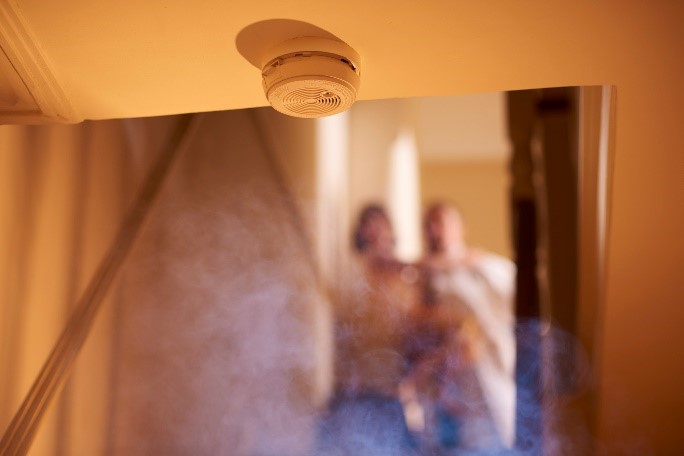
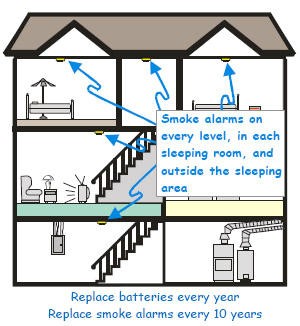
Where are smoke alarms required and in what locations?
At the minimum, smoke alarms are required to be installed between each sleeping area and the remainder of your home. However, this is only the minimum requirement, additional alarms may be required depending upon your home layout.
Newer homes require wired and interconnected alarms (if one sounds they all sound) and have a battery back-up in case of a power outage. They should be installed inside and outside all sleeping rooms and on every level of the home. Always follow the manufacturer’s instructions for proper installation of your specific alarm.
What is a Carbon Monoxide (CO) Alarm?
A Carbon Monoxide alarm is designed to detect dangerous amounts of carbon monoxide in the air. Carbon monoxide is a colorless, odorless, and poisonous gas. It is a byproduct of burning carbon fuel such as the natural gas in your stove and the gasoline in your car. Even small doses of carbon monoxide can cause illness or death.
The presence of carbon monoxide in your home is especially dangerous, if you are sleeping only your alarm will wake you.
Some other sources of carbon monoxide within your home could be:
- stoves / fireplaces (excluding electric)
- Natural Gas or oil furnaces
- Propane appliances (stoves, heaters, clothes dryers, barbecues, etc)
- Idling vehicles
Some of the early symptoms of carbon monoxide poisoning are:
Installing a carbon monoxide alarm will give you an early warning of the danger so you can evacuate your house. If your alarm activates exit your home immediately and call 911.
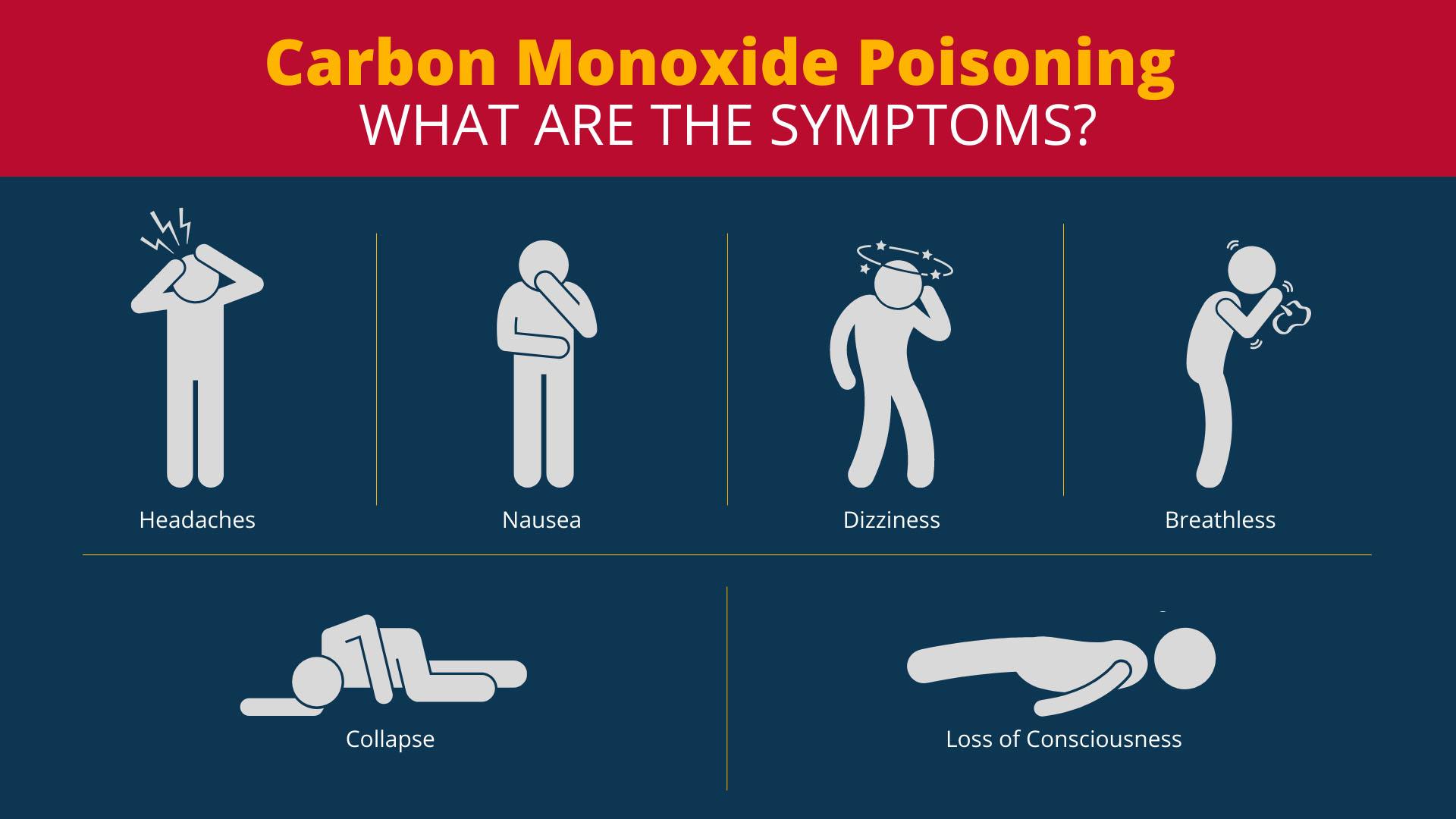
Where should carbon monoxide alarms be located?
Carbon monoxide alarms should be located on each level of your home including the basement. Special consideration should be given to doorways leading to sleeping locations, attached garages, and furnace rooms. Additional alarms may be required depending upon your home layout. Always follow the manufacturer instructions for proper installation of your specific alarm.
If you have only a single carbon monoxide alarm, place it near the sleeping area to make certain the alarm is loud enough to wake you up.
What is a combination alarm?
Combination smoke and carbon monoxide alarms have sensing technologies that work together to detect smoke, fire, and carbon monoxide. Some alarms may have audible features that will notify you differently depending on the hazard detected. Please read manufacturer instructions to understand the features of your alarm.
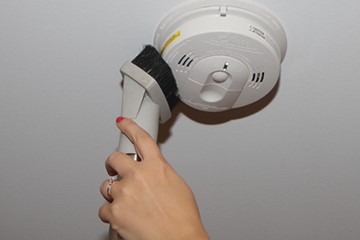
When should I clean my alarm?
It is very important to clean your alarm regularly by gently vacuuming the outside of the alarm to remove dust build up. At minimum, clean your alarms when you change your clocks in the spring and fall. If the alarm is located in an area that produces high levels of dust particles (workshops, bathrooms, etc.) cleaning should be more frequent.
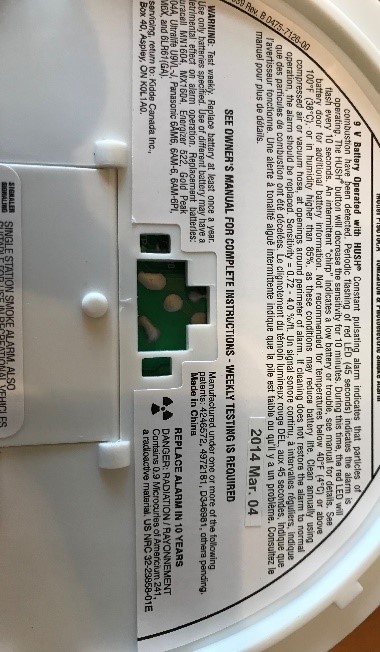
When should I replace my alarms?
Generally, alarms should be replaced before the 10-year anniversary of the date of manufacture unless a replacement date is identified on the alarm label. If no manufacture date can be found the alarm should be replaced immediately.
If an alarm is damaged, painted, not functioning or is involved in a fire or heavy smoke condition it should be replaced immediately.
Why is my alarm chirping?
The “chirp” is usually caused by issues related with the battery or wiring. Interconnected alarms may cause all the alarms to chirp, requiring troubleshooting of each device to identify the issue. Please refer to the manufacturer instructions and after troubleshooting if the chirping is not resolved have your system serviced by a qualified technician.
Some common issues that may cause chirping are:
Hardwired & Battery-Operated Smoke Alarms:
- 9V battery backup requires replacement
- Alarm end of life
- Battery terminal corroded
- Damaged unit
- Alarm unit missing in an interconnected system
- Battery pull-tab – The battery pull-tab must be removed after AC power is provided to the alarm. Fully remove the pull-tab from device.
- The battery drawer is open – The battery backup drawer must be completely closed for the battery to make contact with the terminals.
What about home safety?
Check out the links below for some general tips on home safety:
- Fire Escape Plan
- PUSH (Practice Using Safety At Home) booklet with home safety checklist
- Close Before You Dose Video
- Alarmed and Ready




